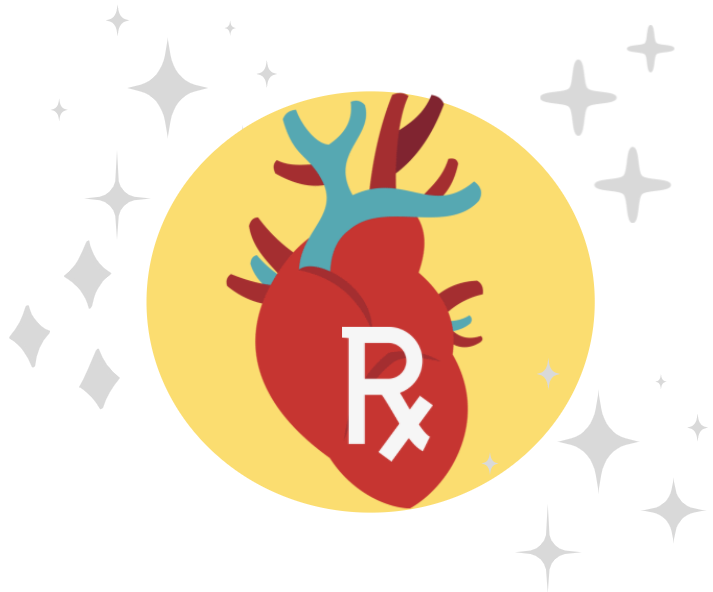Today’s a simple talk but it’s an important one to nail down. What is heart failure? How would you define it?
When I ask learners to define “heart failure” I often get some version of:
“Well, it’s when people either have reduced ejection fraction or preserved ejection fraction.”
But hold on – that can’t just be right, can it? After all, most normal, healthy people out there have a preserved (normal) ejection fraction, right? So does that mean I have heart failure too?

Stripped down to its most basic definition, heart failure is the inability of the heart to pump enough blood to the body. In other fancier words, your heart cannot meet the demand of your body. It’s not supplying enough blood to the body for some reason or another.

We like to categorize heart failure into two main types: systolic heart failure and diastolic heart failure.
Remember in our coronary hemodynamics talk (where we really iron out these ideas), that systole refers to the heart squeezing and diastole refers to the heart relaxing.
Systolic Heart Failure – The Basics
Let’s start with talking about systolic heart failure.
Systolic heart failure, at its core, means that the heart is having issues with systole (hence the name – makes sense right? Love when that happens). In other words, your heart is having problems with its squeezing potential. A lot of the time, you will see systolic heart failure due to ischemic (lack of blood flow/perfusion to heart tissue) causes, also known as ischemic systolic heart failure. This is a classic complication of patients who undergo an ACS event – their coronaries are blocked, the tissue distal (past the blockage) to that coronary blockage dies, and now you have dead heart muscle and therefore the heart as a whole squeezes weaker. Less heart muscle, less squeeze. You can also see systolic heart failure with things like excessive drug use, like cocaine users.

Source: Spoon University
Systolic heart failure is also known as heart failure with reduced ejection fraction, or HFrEF. Keep in mind that ejection fraction is such a relative term (if you haven’t reviewed my talk on hemodynamics – I would recommend that now since I go all into what EF really means and actually all the basic stuff you will need to know for this topic is in that talk and the coronary anatomy talk).
So in systolic heart failure, HFrEF – whatever you want to call it – your heart FILLS with enough blood, it just doesn’t have the ability/strength to kick a good stroke volume out of that left ventricle. Therefore, at the end of the day, the heart is not getting enough blood out to the body, which is why this is indeed a type of heart failure (meets that basic definition above, amirite?).
Diastolic Heart Failure: The Basics
Unlike HFrEF, patients who have HF with preserved ejection fraction (aka HFpEF aka diastolic heart failure) do not have an issue with squeeze. The heart instead has a problem with relaxation and the size of the left ventricle.
I always tell my learners – think of your heart as a muscle – just like every other muscle in your body. If I (hypothetically – I don’t) went to the gym and lifted weights what would happen to my lil’ biceps? They would grow. Your heart muscle is no different.
When faced against unnaturally high pressures or the need to work harder over a chronic period of time, your heart develops structural changes and grows and gets bigger- this is what we call hypertrophy. As your heart muscle gets bigger and bigger, the space in the left ventricle may grow smaller and smaller, and its ability to relax because it’s so stiff is impaired.

So unlike systolic heart failure where you have enough blood in the LV prior to pumping and your LV is just too weak to pump that blood out, in diastolic heart failure (HFpEF), your heart is great at contracting, but there’s simply just not enough blood in the LV before systole to fulfill the demands of the body.
I love showing my learners the following GIFS (remember, I’m a visual person):

Think of your LV as a water bottle (LV) filled with water (blood). In systolic heart failure, you have enough water to fulfill the needs of your thirsty person but you don’t have the ability to squeeze that water out of the bottle. What do you end up with? Less water exiting the water bottle.
Now let’s look at diastolic heart failure:

In diastolic heart failure (HFpEF), your LV contracts just fine. However, there’s just not enough water in the bottle to begin with. So despite your good efforts at squeezing water out, you end up with less water out of the bottle because you had less water in the bottle to begin with.
.jpg/_jcr_content/renditions/cq5dam.web.1920.1080.jpeg)
That’s the difference between systolic and diastolic heart failure in a nutshell. Next we can focus on some treatments for these two different types of heart failure – are they the same? Are they different? Why or why not? Stay tuned guys!

2 thoughts on “Heart Failure – Why it’s an ☂️ term”